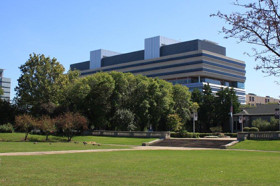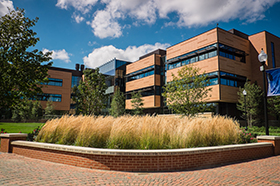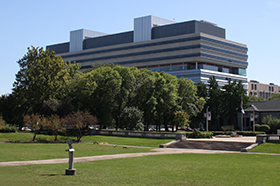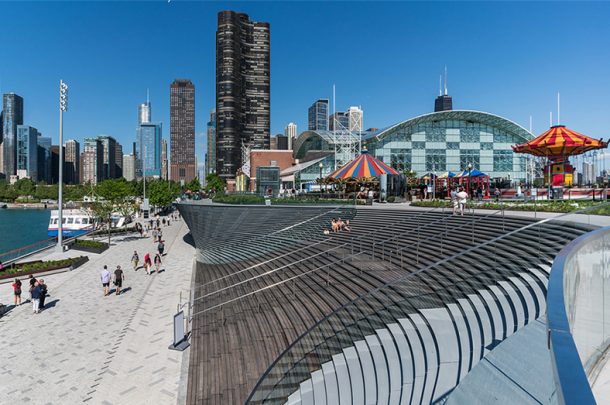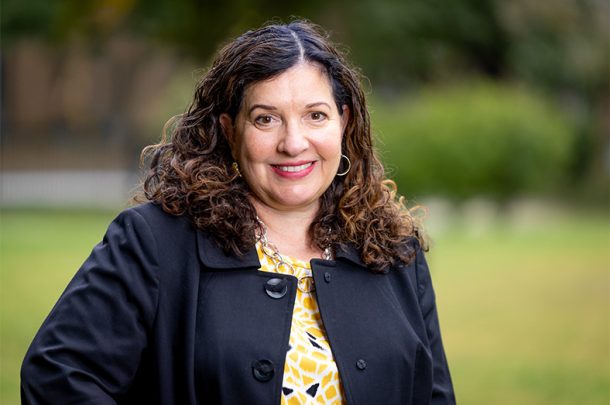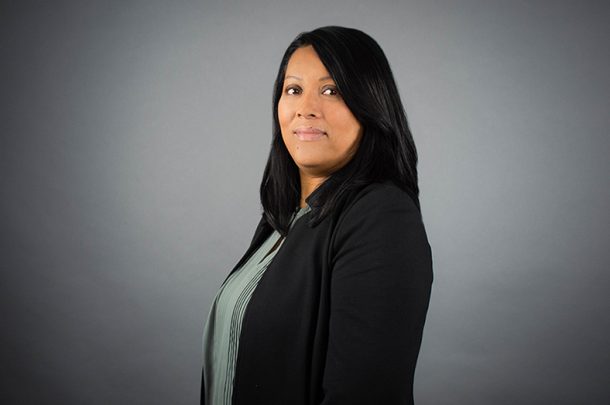Do you know that the average office worker spends 7 hours a day working in front of a computer screen1? Add that to the hours that are spent looking at our phones or tablets and you can see the total amount of time that most of us spend in front of a screen. Some studies have gone even further and quantify that people can spend up to an average of over 9 hours a day total in front of a screen – and these studies did not include young adults under the age of 18. That number will grow to be even higher as technology continues to evolve and more and more schools incorporate tablets and computers into their curriculum.
With more screen time on the increase, health concerns are on the rise as well, especially as it relates to eyestrain. Couple that with trying to juggle safety, energy efficiency, excellent light quality and the newest lighting technology, and it’s no wonder that employers, owners and architects look to the experts for help designing good visual environments for their spaces. In addition, increased demands from national, state and local energy efficiency requirements increase the need for complex lighting control systems which are often not included in a lighting designer’s scope. Therefore, it may be best to work with an engineering firm with an in-house lighting studio to achieve maximum comfort and productivity.
Additionally, these advantages are not limited to interiors projects alone. When designs for exterior lighting are required, the benefits of an integrated in-house lighting studio and electrical engineering group becomes even more pronounced. When restricted budgets are encountered, owners can have stamped electrical and lighting plans completed without additional coordination. Primera Engineers recently experienced this on a University landscape improvement project. Our client was on an extremely tight budget, but because both lighting and electrical disciplines had been working together, the team was able to complete both scopes within budget, without the need for additional outside coordination. On a similar project at the Children’s Garden at Morton Arboretum, Primera provided lighting protection for exterior structures, and saved the client money by not having to contract a separate lighting designer to do the work. Having in-house lighting studio and electrical engineers under one roof provides a big value-add to clients and allows the contribution of more amenities within the same budget and quicker turnaround time.
In addition to the above, here are the top 5 benefits of working with an engineering firm with an in-house lighting studio:
- Convenience
When working with an in-house team, they are already familiar with your project and there is no need to provide multiple updates, phone calls, emails, etc. to a third party. This allows for a more streamlined process and decreases the probability of errors or delays – a benefit to both the client and designer. Another big advantage is that you can always reach someone who will be able to assist in case of a design emergency – now that’s excellent customer service!
|
- Cost-effective
Who doesn’t like to save a little money here or there? Cutting out the middle man means everyone can work quicker and more efficiently. Working with an in-house lighting team allows for greater flexibility needed when making time sensitive decisions or when timelines or staff need shifting. The ease of internal communication allows for fewer revisions. For example, for projects with sustainability goals – an in-house team can communicate complete calculations with the rest of the team so that energy models are finely-tuned and mechanical systems can be right-sized. Right size equipment can provide tremendous cost savings in terms of first costs and operations-related costs.
|
- Knowledgeable
Not only does working with an in-house team provide you with all the required services that are needed for selecting suitable fixtures both aesthetically and functionally, but they are also able to go far beyond the basics and provide customized service from engineering experts. For example, they can provide all the required photometrics to evaluate lighting efficacy and efficiency. They can adjust to the requirements for LEED for daylighting and daylight harvesting, or they can provide a full suite of services from licensed electrical engineers.
|
- One-stop shop
Working with a team of experts means they are able to coordinate the whole process from start to finish. From coordinating the in-coming power from the public utility company to aiming and spotting for the specialty lighting for retail and art installations, and everything in between. An in-house team can help navigate exceedingly complex requirements for lighting controls which are required by international energy codes and the newest versions of LEED. They can help in meeting all the requirements for lighting efficiency, provide high quality lighting to reduce eye strain and incorporate the right fixture spacing, locations, and fixture types by analyzing the lighting photometrics.On a recent project, Primera’s lighting studio lead noticed mechanical equipment in an exposed ceiling area in the atrium of a facility. When the lead mechanical engineer and lead lighting designer met, it was clear that the engineer did not have a clear understanding of the reflected ceiling plans and how this impacted the final lighting design. The two were able to quickly walk through the issues and help get the mechanical design going down the right path (and also provide early coordination of the lighting design which used the same soffit wall). This example of a simple ten-minute conversation saved significant redesign (and client costs) later in the project.
|
- Friendly
One of the joys of working with an in-house team is that you get to know them and they get to know you, and your business. What’s better than being able to work with someone who feels like they are part of your team and understands your goals? Building a relationship with a strong engineering team means that nothing gets lost in translation and over time the in-house team begins to anticipate your needs and can execute your vision to a tee.
|
If you would like to discuss your next electrical engineering or lighting design project with our experts please email Lourdes Gonzalez.
References
1https://www.onmsft.com/news/microsoft-us-workers-spend-7-hours-computer-day-average
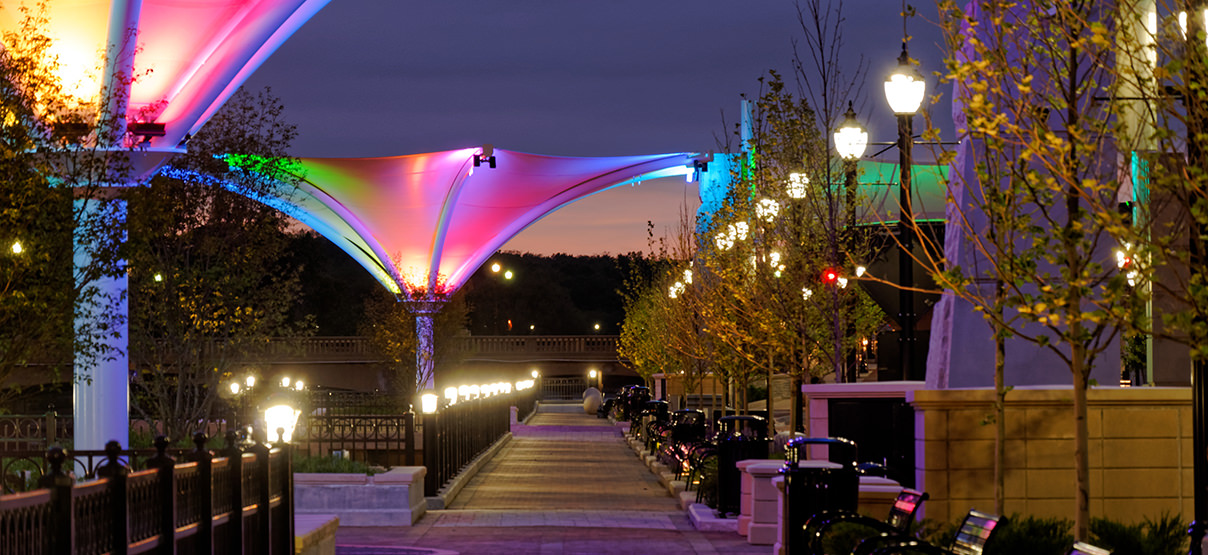


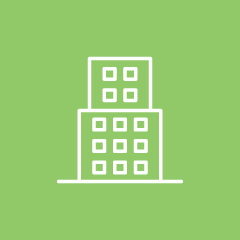


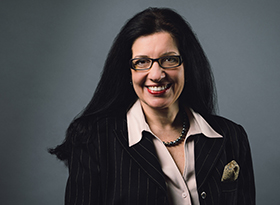
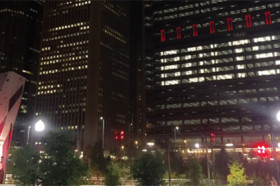
 Exterior Lighting Controls Technologies
Exterior Lighting Controls Technologies 
